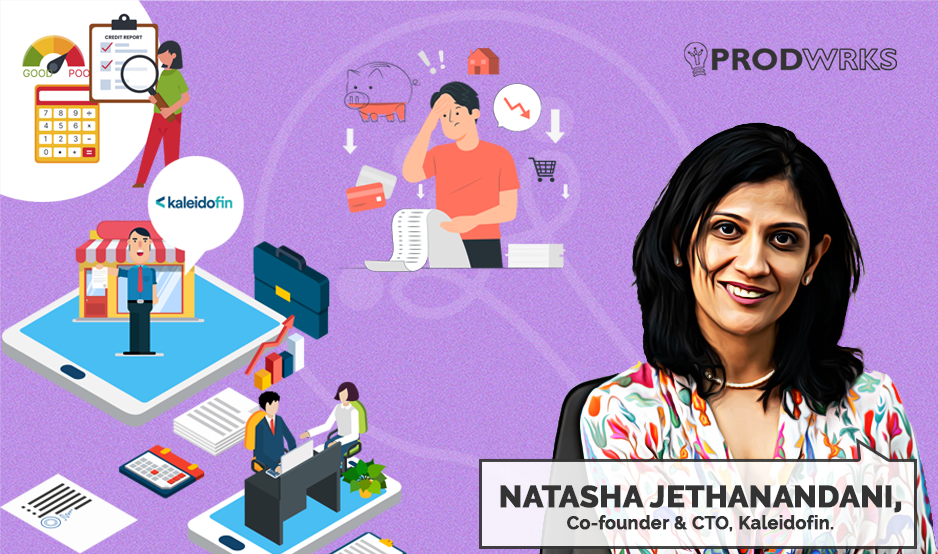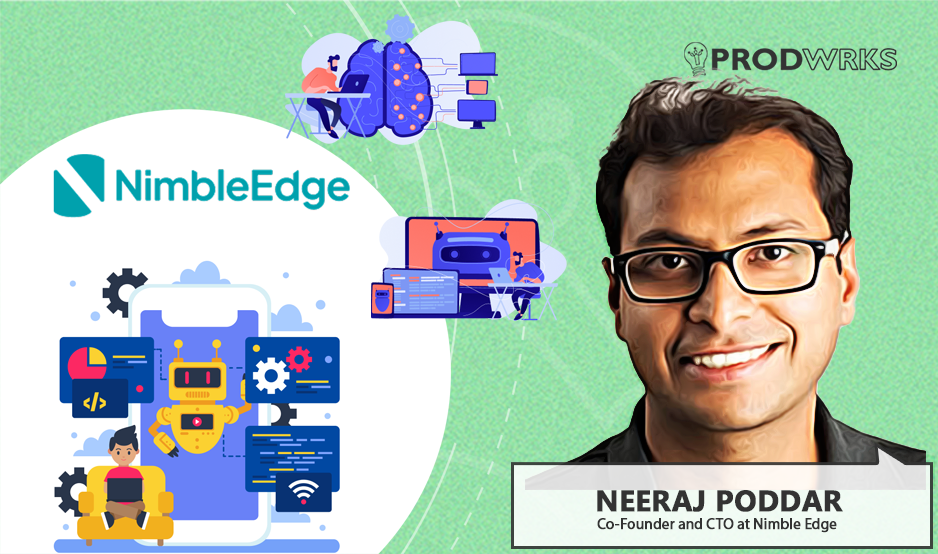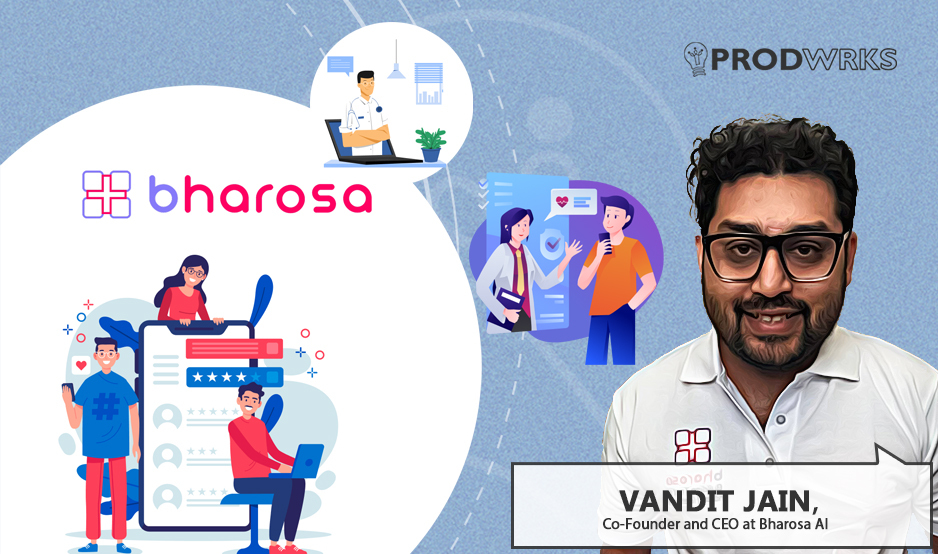
For millions of micro and nano entrepreneurs across India, securing a loan isn’t just about filling out forms, it’s about navigating a system that often excludes them. For instance, despite the rapid digitization of financial services, formal credit penetration in India’s 6.3 million MSMEs (contributing 30% to GDP) remains as low as 20% (among the lowest in Asia).
The challenge of accessing formal credit isn’t limited to MSMEs. Per the World Bank’s 2021 Global Findex, while 45% of Indian adults reported borrowing money, only a third did so from a formal financial institution. The reason: Many of these micro-business owners and individual borrowers, classified as the informal sector, are “invisible” to traditional lenders due to the lack of digital financial records or GST registrations, and are considered “unbankable”.
“Especially in today’s heightened risk environments, banks are very cautious, with loan rejection rates as high as 40-60%!” says Natasha Jethanandani, Co-founder & CTO of Kaleidofin, a Chennai-headquartered AI-driven fintech startup that helps lenders “score” and better understand borrowers in the informal sector throughout the credit life cycle — from initial loan application to portfolio management.
So far, Kaleidofin has $37 million in funding, backed by the likes of Bharat Fund, Blume Ventures, Flourish Ventures, Bill & Melinda Gates Foundation, Michael & Susan Dell Foundation, and other investors.

Natasha states that when banks deny loans to borrowers in the informal sector, they have no choice but to rely on informal credit sources like local moneylenders and unregistered financiers who often charge exorbitant interest rates ranging from 24% to 60%!
She says “If borrowers in the informal sector can consistently repay high-interest loans from moneylenders, often at rates over three times higher than formal credit, they are more than capable of managing structured loans from banks at significantly lower costs.”
In a conversation with Team ProdWrks, Natasha shares why the challenge isn’t the borrower’s ability to repay, but rather the system’s inability to assess the creditworthiness of people in the informal sector. She explains how Kaleidofin uses AI to de-risk lending for the underserved and informal markets, by providing financial institutions with the tools (Ki Score) to accurately assess creditworthiness and (Ki View) to manage risks and opportunities in their loan portfolio.
The Challenge: Lending to the Credit Invisible

Mllions of people in India’s informal sector have unpredictable or undocumented cash flow, making their financial history virtually invisible to financial institutions. Yet, lending institutions—banks, NBFCs, and microfinance institutions (MFIs)—primarily rely on digital transaction records and credit bureau reports like CIBIL scores before issuing loans.
This approach excludes credit access to a large portion of India’s workforce, including:
- Daily wage earners with fluctuating incomes.
- Micro and nano entrepreneurs like Kirana store owners, tailors, and agribusiness retailers.
- Gig economy workers who may not have steady salaries.
- Households reliant on multiple informal credit sources.
Natasha explains, “The problem with rule-based credit bureau systems is that they use the same ‘scoring’ to underwrite loans for you and me (upwardly mobile) and the loans for the underserved or informal segments, who often have thin or non-existent credit files,” explains Natasha.
This one-size-fits-all approach fails to account for how credit works in the informal economy:
- Multiple Small-Ticket Loans: Many borrowers in the informal sector juggle three or four microfinance loans simultaneously, artificially lowering their credit scores even if they consistently repay on time. In recent times, the RBI has also called attention to the rising delinquencies and borrower indebtedness in the microfinance sector.
- Lack of Digital Inclusion: Many of these borrowers are less digitally inclined, making it even harder for them to access formal loans or digital credit solutions.
- Informal Lending Dependence: Due to limited access to formal financial products and smaller loan sizes in microfinance that don’t meet their requirements, many people borrow additional money from informal lenders– moneylenders, friends, or local financiers–further obscuring their creditworthiness from traditional lenders.

Due to limited access to formal financial products and the inadequacy of small-ticket microfinance loans to meet their needs, many individuals turn to informal lending sources—moneylenders or local financiers. This reliance on unregulated credit further masks their financial behavior, making it even harder for traditional lenders to assess their true creditworthiness.
Perhaps most critically, reliance on informal and multiple credit sources prevents households from building formal credit histories and locks them up in a cycle of debt that excludes them from affordable financial products that could improve their economic prospects.
However, as Natasha points out, this segment represents a massive untapped opportunity for banks and financial institutions. Most of these people have already proven their ability to repay high-interest loans. So there’s no reason why they can’t service a structured formal loan at nominal interest rates.

Natasha states that Kaleidofin’s problem statement is not only about improving credit access to the informal sector, it’s actually about enabling financial institutions to be comfortable enough to work with this customer.
“First and foremost, how do you evaluate the risk of a customer? And that's their intent to repay and capacity to repay... both. At Kaleidofin we have created an AI engine that does that,” says Natasha.
Kaleidofin offers a suite of AI-powered tools to redefine how lenders assess, manage, and expand credit access in the informal sector:
- Ki Score – AI-Driven Credit Scoring and Decisioning.
- Ki View – AI-Driven Analytics Product for Portfolio Risk Management.
- Ki Credit – A Unified Platform incorporating both Ki Score and Ki Credit.
Today Kaleidofin partners with over 57 formal financial institutions across India and its products handle data from over 5.9 Mn+ borrowers with $3.8Bn+ loans underwritten based on Ki Score.
Ki Score: Building a New Credit Risk Model with AI
At the heart of Kaleidofin’s risk assessment framework is Ki Score. It is rewriting the rules of traditional risk assessment, especially for those excluded by traditional credit systems like CIBIL scores that rely on digital financial markers.
Instead, Ki Score leverages AI-driven credit decisioning engine to de-risk lending for underserved communities, by proving their creditworthiness using alternate financial data overlooked by traditional systems.
Ki Score’s helps borrowers and lenders in three key ways:
- Assessing and Scoring Borrowers’ Risk Profiles.
- Improving Efficiency in Credit Underwriting.
- Enabling Individual Underwriting for New-to-Credit Customers

1. Assess and Score Borrower’s Risk Profile
Ki Score assigns each borrower a risk score from 1 to 100, categorizing them as low, medium, or high risk. This scoring is based on a combination of data sources representative of informal sectors’ financial realities. This includes:
- Credit history and repayment patterns.
- Digital transaction data and spending behaviors.
- Business seasonality for micro-entrepreneurs.
- Geolocation insights.
- Broader socio-economic factors.
Ki Score leverages AI to aggregate alternative data sources–from behavioral insights to transaction patterns–to build a more holistic picture of creditworthiness. It’s similar to how healthcare institutions use social determinants of health (SDOH) data to predict health risks. Similarly, Kaleidofin uses data to determine the social determinants of ‘credit’ health.
“There are ways to assess that at a micro-geography level,” says Natasha. “For example, Ki Score can help figure out a customer's risk profile based on their financial behavior, education level, access to water, proximity to disaster-prone areas, how weather affects their business, etc. We can assess their ability to repay from all these alternate data sources.”
Natasha says these are the insights that financial institutions usually don’t have but deeply value in Kaleidofin. “It’s difficult to ask borrowers these questions directly, but AI helps us extract relevant insights from these data seamlessly.”
2. Improving Efficiency in Credit Underwriting
Beyond just risk assessment and scoring, Ki Score can also help lenders optimize loan allocation, ensuring borrowers receive adequate yet responsible credit from a single source instead of multiple fragmented loans. It ensures that loans are neither “too high” (avoiding over-leverage) nor “too low” (ensuring sufficient credit access).
For example, instead of securing ₹1,20,000 across multiple informal lenders, Ki Score enables a borrower to receive ₹1,00,000 from a single registered financial institution, ensuring:
- Lender confidence with a structured repayment model.
- Borrower sustainability by avoiding excessive debt burdens
Natasha adds, "Ki Score is also equally good at saying you (financial institution) must reject a set of customers if they are over-indebted. So it isn’t just about approving loans. It considers multiple financial indicators to ensure responsible lending."
Additionally, Ki Score allows institutions to adjust risk thresholds dynamically (Scores ranging from 1 to 100) based on geography, industry, and loan type. Each financial institution can set its own threshold, often classifying scores above a certain level as high risk.
“We realized that loans from borrowers in different regions or sectors perform differently. So, instead of having a single cut-off score, institutions can use Ki Score to adjust their thresholds dynamically. For example, a lender may set a higher risk cut-off in lower-risk districts or low-risk businesses allowing lenders to maximize profitability,” Natasha elaborates
3. Enable Individual Underwriting for New-to-Credit Customers
Ki Score also helps first-time borrowers in the informal sector, who lack a credit history, become eligible for formal credit. This is critical since more than 20-30% of borrowers at financial institutions are “new to credit” (NTC), making risk assessment challenging.
"How do you assess someone with no prior credit history?" Natasha explains. "These are people with non-existent or thin credit files and it presents a unique data challenge. We solve this using ‘look-alike’ AI models that analyze past borrowers who were once NTC and had similar financial traits."
Ki View: Helping Lenders Manage Portfolio Risk and Unlock Opportunites at Scale
When financial institutions lend to millions of borrowers, the challenge isn’t just assessing individual creditworthiness, it’s managing risk across an entire portfolio. Loan books can span multiple repayment cycles, geographies, and customer segments, making it difficult to track emerging risks before they escalate. That’s where Ki View, Kaleidofin’s portfolio risk management solution, shines.

“While Ki Score helps lenders evaluate individual borrowers, Ki View offers a broader perspective, analyzing patterns at scale to uncover trends, detect early warning signals, and help lenders react before small risks turn into major crises,” says Natasha.
For instance, Ki View provides answers to lenders for critical questions like:
- Which branches/geographies are seeing higher delinquencies?
- What types of loans are underperforming?
- Where is collection efficiency dropping?
A key feature of Ki View is its AI-driven early warning system, which predicts potential default hotspots before they spiral into crises.
“Say a particular district in Maharashtra starts showing weakness in transportation loans,” Natasha illustrates. “A branch manager might not immediately catch this trend, but our AI can detect that this has historically led to a larger problem. It’s not about highlighting one or ten loans, it’s about spotting the contagion risk.”
These insights allow lenders to take preemptive action, whether by restructuring loans, increasing monitoring, or adjusting credit policies in affected areas.
“In one case, Ki View identified that a specific branch was performing very differently from others,” Natasha recalls. “Loans in that branch were at risk of delinquency just 15 days after disbursement, an early indicator of operational inefficiencies.”
Unlocking Growth Opportunities with Net Gain Analysis
Beyond managing risk, Ki View and Ki Score also uncover business opportunities through what Natasha calls Net Gain Analysis.
Natasha explains how Net Gain Analysis works: “Ki Score assigns a score from 1 to 100, and usually, a lender will set a cutoff, like ‘anyone above 60 is high risk.’ But what we’ve realized is that risk varies by geography. If Muradabad is a high-risk district but a neighboring district has lower risk, the lender can set a higher cutoff in the low-risk district, allowing them to lend to more people profitably.”
The ability to set differential cutoffs extends beyond geography. “It can also be about the type of loan,” Natasha says. “If dairy loans tend to have a strong repayment history, Ki View enables the lender to prioritize them over other types of loans.”
By segmenting risk profiles dynamically, lenders can tailor their strategies based on district, loan type, or even borrower behavior. This ensures they lend more in low-risk areas while tightening policies where risks are higher.
“It’s not just about controlling risk,” Natasha clarifies. “It’s about growing the business in a smart, data-driven way.”
Ki Credit: Connecting the Lending Ecosystem
While Ki Score and Ki View focus on risk and portfolio management, Ki Credit is the middleware that integrates these products and connects different players in the lending ecosystem. It bridges the gap between loan originators (such as NBFCs, small finance banks, and microfinance institutions) and large banks (like HDFC, SBI, etc.), enabling smoother partnerships.

Natasha explains, “Many originators are already using Ki Score and Ki View. With Ki Credit, we integrate these players seamlessly with banks and financial institutions.”
This integration enables multiple lending models:
- Retail loans: Direct disbursement to borrowers.
- Securitization: Allowing financial institutions to sell pools of loans to banks.
- Direct assignment: Transferring loan portfolios between lenders.
While financial institutions can integrate with Kaleidofin via API, Ki Credit stands out by also offering SaaS-based no-code application for easier deployment in smaller financial institutions that may still rely on legacy systems where API integrations aren’t feasible.
“That was a key learning while designing the product. Not every financial institution will start with a deep API integration. Instead, as fintech players, we need to create lightweight, flexible solutions that make adoption effortless. Ki Credit enables lenders to integrate seamlessly without any complex API development, making partnerships more accessible and scalable.”
Beyond Numbers - Measuring Kaleidofin’s Impact on Financial Inclusion

For the borrowers in the informal sector, Ki Score operates in the background. It’s a product used by the lenders and the borrowers don’t see it. They only feel its impact—whether it’s getting a business loan at the right time or accessing credit more easily.
For Kaleidofin, measuring this impact isn’t just about tracking numbers. “The key question we ask is: Did it make a difference?” says Natasha. Through multiple independent studies, Kaleidofin has been able to gauge this difference in concrete terms.
“One of the most striking findings was that nano entrepreneurs saw an almost 20% increase in profits after accessing credit through financial institutions partnered with Kaleidofin,” Natasha explains. “That’s real impact–directly improving their cash flows and take-home income.”
The impact goes beyond nano entrepreneurs. “For ‘New to Credit’ (NTC) customers, those who had never accessed formal credit before, the results were even more dramatic. They saw a 100% increase in their earnings after receiving a loan.”
Kaleidofin also measures the impact of its solutions on the lenders’ portfolios at scale, ensuring that financial institutions maintain a balance between risk control and financial inclusion.
“At scale, it's all about tracking acceptance rates, risk metrics, and portfolio health,” Natasha explains. “We don’t just control risk; we also focus on expanding access to the right set of borrowers.”
Key metrics that Natasha measures for Kaleidofin’s impact at scale:
- Risk Monitoring: “We track loans over 30, 60, and 90 days to detect early signs of portfolio deterioration. If risk increases despite Ki Score, it means a loan was given to someone who couldn’t service it, which ultimately hurts both the lender and the borrower.”
- Acceptance Rates vs. Credit Bureau Benchmarks: “We compare our acceptance rates against traditional credit bureaus to see where Ki Score is making a difference. The goal is to achieve both lower risk and higher acceptance, ensuring that more underserved customers gain access to credit.”
- Adoption Across Different Stages: “Ki Score isn’t just used for underwriting. We track whether lenders are applying it in the acquisition, loan recovery, and other strategic decisions.”
- Targeted Financial Inclusion: “We measure how many women, gig workers, and nano entrepreneurs are benefiting from our solutions. Understanding which segments we’re effectively addressing helps us refine our approach.”
At its core, Kaleidofin’s impact assessment isn’t just about numbers, it’s about enabling financial institutions to lend more responsibly while unlocking life-changing opportunities for millions in the informal sector. “By ensuring that the right people get the right credit at the right time, we’re not just mitigating risk, we’re driving real financial inclusion.”
Expanding Horizons: From India to Global Markets
While Kaleidofin has already made significant strides in India, its model is also now being adapted in emerging markets such as East Africa, MENA, and Bangladesh-regions where financial infrastructure and consumer behavior vary widely.
"One of the biggest challenges is that different markets have different data landscapes," she explains. "For example, Bangladesh doesn’t have a credit bureau, but customers have extensive savings histories. So, Ki Score has to adapt, leveraging alternative data sources to assess creditworthiness."
This ability to customize and scale without rebuilding from scratch is what makes Ki Score so powerful. “The underlying product is highly reusable. We’re not just building for one market at a time; we’re building a core platform that can be rapidly adapted for new regions,” Natasha says.
"There’s still customization involved, but the heavy lifting was done upfront. That’s the beauty of building products versus executing projects–you create something that scales with far less effort than starting over each time."
For fintech product founders Natasha emphasizes that the space is ripe with opportunities with ample room for innovation and impact.
"This isn’t a market where all the problems have been solved," Natasha points out. "We didn’t envision Ki Score scaling to millions of customers on day one. It started with a much smaller data set. But fintech evolves as new challenges emerge, and that’s where product founders can thrive–by finding creative ways to reach underserved customers and give them access to financial services at the right time."
She likens the journey to what Zerodha did for investing or how UPI based payment solutions transformed consumer convenience. “But what about convenience for financially underserved customers? That’s still an open challenge,” Natasha declares.
Natasha states that one of the biggest misconceptions holding people back in fintech is the belief that "there’s no margin in this space" or that "nobody will pay." She sees this as an outdated assumption. "The real opportunity is in low-cost, scalable solutions that break barriers. The next wave of fintech founders will go even further than us in making that a reality.



